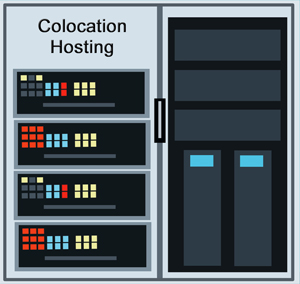By: John Shepler
You’ve been managing your own data center for a long time, but your company is expanding, and your server room can no longer keep up. Now you have a decision to make: either rent more space for the extra servers, storage, and other equipment, or think about migrating everything to the cloud. It’s a major choice that demands serious thought before any money is spent.
Reading tech news and articles, it seems like everyone is getting rid of their old server rooms and just leasing cloud services. There are many appealing aspects to this. With your data and apps stored securely in the cloud, you eliminate capital expenditures, electricity costs, physical security issues, HVAC concerns, and maybe even IT staff requirements. You simply request more capacity from the cloud provider if you require additional bandwidth, processing power, or storage, and this can even be done automatically.
Why Wouldn’t You Join the Stampede to the Cloud?
You might be feeling a little uneasy. You’ve probably heard the saying, “There is no cloud. It’s just someone else’s computer.” In reality, it’s someone else’s thousands of computers, all neatly divided up to be shared by thousands or millions of customers. The idea behind the cloud is that it should appear as if you have your own dedicated computing resources.
Does that sound appealing or make you a little nervous? You’re content with the responsiveness of your IT team and the control you have over all of the hardware and software. Your facilities are not used by any other businesses. Keeping intruders out of the building and behind the firewall is part of security. So, is accepting the situation and renting a new building for expansion your only option?
Consider the Colo Option
A third option might be preferable. Rent space in a specialized facility owned by someone else while retaining ownership of your computing resources. This is the premise behind Colo or colocation hosting. These buildings were once known as carrier hotels because their primary occupants were telecommunications companies. Colo is now widely used by enterprises of all sizes.
A colocation facility offers a secure building with controlled access and security guards. It is staffed around the clock, which may even exceed your current capabilities. The facility is powered by enormous, redundant power lines, ensuring that there is always enough electricity to run new machinery. Furthermore, that power is backed up by emergency generators and frequently batteries to keep things running smoothly in any situation.
You’ll need to get rid of the heat produced by the electronics with all that power. Redundant HVAC equipment handles this by supplying cold air to the servers and other equipment. The facility is kept dust-free with air filters.
What about internet connectivity? This is one of the reasons why businesses relocate from their own facilities to colocation centers. Major carriers have a presence in the colo due to the high demand for bandwidth from so many customers. You frequently have a choice of numerous carriers, each with multiple fiber links for dedicated access and internet connectivity. While not all businesses have access to high-bandwidth fiber, colocation centers do. They’ll supply you with as many Gbps and IP addresses as you require.
Moving to a Colo Facility
When you move to a colo, you rent racks with power and cooling, as well as bandwidth connections. Need more security? Those racks can be housed in a locked cage that prevents anyone but your employees from accessing them. Your employees are free to install their own equipment, perform maintenance, and make improvements as needed.
If desired, many colo facilities provide extra services. The colo technical team can monitor, troubleshoot, and repair your equipment for you. Instead of purchasing servers and storage, you can lease them from the colo.
Are you running out of space in your technology facilities but want to look into alternatives to simply migrating to the cloud? Consider colocation data center facilities as a way to have more control while saving money over leasing your own dedicated buildings.


